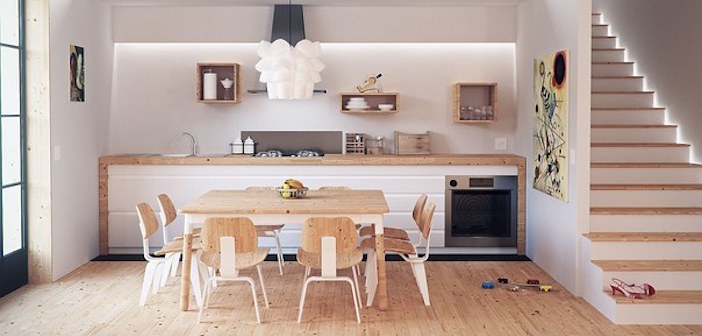Some of you might have read my experience dabbling with minimalism. It’s a concept I love, and I plan on introducing and adopting more of its core principles into my home and using them to shape my consumer habits. World-renowned tidying expert turned best-selling author Marie Kondo and her innovative KonMari method has been revolutionizing the way people organize their homes, using a decluttering approach and system that is based on joy. Since the release of Marie’s 2011 bestseller, The Life-Changing Magic of Tidying Up: The Japanese Art of Decluttering and Organizing, millions have converted to a more seamless and simple way of living in the home.
This kind of transformative experience can positively affect not just the state of your home but also your family dynamics and lifestyle. Give the following tips a go to help handle life with frantic toddlers, messy teenagers, or just to put more of a zing into your annual spring clean:
Declutter in a specific order
The KonMari method recommends that decluttering the house should be done is a specific order: clothes, books, papers, Komono and sentimental items. The Komono category refers to miscellaneous items. Sentimental items are left until the last stage for obvious reasons. Go through each phase of the journey and by the time you end up at the last stage, it should be easier to deal with.
Understand just how much you own
The very first step of the KonMari method involves placing all of your clothing into one giant mountain to sort through. I tried this, and the sheer volume really astonished me and woke me up to how excessive my clothing (and shoe) collection was. Hopefully this simple act will help us all to think about our purchases moving forward. Do you need it? Will you wear it? Will it bring you joy that will last beyond the initial purchase?
Focus on what you want to keep
KonMari is not just about throwing things away, but actively deciding which items in the home make you and your family happy. It encourages people to be more discerning in choosing items that “spark joy” in their lives and to treasure the items that are kept. For items that fall short, evaluate their value, thank the item and have it rehomed, recycled, or donated By the time you’re finished, you will only be surrounded by what has a purpose and what makes you happy.
It’s OK to keep sentimental items
I’m at this stage in the KonMari process and I haven’t managed to throw out much of any of my sentimental items. I have a box filled with items from the Christmas morning that I told my husband that I was pregnant, a drawer of albums made by my previous students when I first moved to China, and a number of folders filled with old photos, letters, cards, and other miscellaneous keepsakes.
It’s best to note, particularly for KonMari newbies that is not necessary to get rid of everything. Parents might be torn when it comes to parting with sentimental things such as baby shoes, first drawings, and family photos. Marie suggests that you try and be as discerning as possible and ask yourself the following questions: “Does it make sense for me to keep this?” and “Do I really treasure this item?”
Pick out single items from a collection that evokes the most happiness and represents more acutely what the whole collection means. Instead of keeping hold of stacks of photos, again pick a few out, bid farewell to the rest and give them a home in a frame and display them.
Give everything a home
KonMari is about “ultimate simplicity”. She emphasizes the importance of having a designated place for everything that stays. From household linen and tools to children’s toys, everything should be given a specific place so that you can easily reach out for an item or put it back when not in use. This is a good strategy for teaching your children to clean up after themselves and be more responsible for the items they own.
All family members should be responsible for their own belongings
Get the children involved in choosing items that spark joy for them and discard the ones that do not. Teach each member of the family to respect one another’s belongings and their respective “joy” choices. As a result, everyone who pitched in for one of these sessions will play a role in the household and will be encouraged to pull their weight when it comes to keeping the home and their designated area clutter-free. Allow even the little ones to observe and participate in simple tidying-up tasks. Get toddlers to tidy up their toys and get the family to sit and help fold laundry together and place own items neatly in their drawers and wardrobes.
Fold your clothes
As simple as this may sound, it makes a world of a difference. Marie believes that all clothing should be folded and placed side by side for easy visualization and to make it easy to retrieve whatever you want without having to mess anything up. The same can be applied to all stackable items – makeup palettes, DVD’S, Books, and more.
Enjoy getting organized and have fun with it!
Photo: Pixabay



